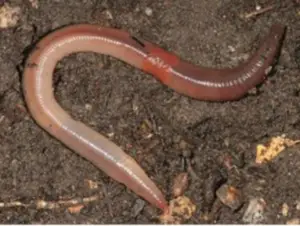
Best Trout Bait to Catch the Big One
Big trout get that way because they are wary and smart. There are however, some actions you can take and baits you can use to entice these creatures onto your hook.
Knowing a trout’s habits helps you when selecting where you will go fishing for them. Trout like low light conditions. They have no eyelids, and so shun any bright light situations.
Trout are easier to catch during or right after a rain. Rain increases water turbidity which can disorient baitfish, like minnows, and makes it easier for trout to catch them. During or after a rain is a good time for trout to confuse your bait with their prey.
Big trout, while smart, are also on the lazy side. They prefer to hang out in areas that provide protection but have room enough to hunt prey. Look for them in these areas on a lake.
The Difference Between Bait And Lures
Isn’t bait a lure, and a lure a form of bait? No, apparently not. And while it may seem like the two are interchangeable, there is a definite distinction between them that is important to know before you go out fishing for trout. The main reason you will want to know the difference between bait and lures is that you will use them at different times depending on the light of day and the water temperature and clarity.
This helpful chart comes from Northland Tackle and shows when you will have more success by using either bait or lures.
Chart from When to Use Baits or Lures | Northland Fishing Tackle

The thought is that fishing lures are like hunting fish, and bait fishing is like trapping fish. When you use bait, you set out your baited hook like a trap and wait for the trout to come across it. A lure will be used to cover more water and seek out the trout rather than waiting for the fish to come to the lure. Both bait and lures have advantages and disadvantages, strengths and weaknesses.
For the sake of this article, we are going to cover the best bait to use to enhance your chances of catching that big trout.
What Are the Advantages of Bait?
One of the biggest advantages of bait is that it appeals to a wide range of fish, so while you may be fishing for trout, other fish will be signaling interest in your bait which will attract trout.
When fish go after the bait, they hook themselves when they attempt to eat the bait. This means that being aware of, and knowing when a fish strikes so you can sink the hook is less critical than when using a lure.
Bait is usually inexpensive. You can put what you don’t use back into the environment or freeze certain baits for future use.
What Are the Disadvantages of Bait?
Depending on your bait, you will need to keep it cold or in a water-circulating live well. Bait does not smell like roses, and so you and your gear will probably take that odor home with you.
One of the advantages of bait is that it attracts all kinds of fish. One of the disadvantages of bait is that it attracts all kinds of fish. When using bait you will probably get some fish that are undersized and are not what you are looking for.
Because the fish will hook themselves when taking the bait, it can sometimes be difficult to catch and release without major damage to the fish, limiting their chances of survival.
The Best Trout Baits To Use To Catch The Big One
The larger the trout, the larger the prey that it will eat. Lake trout will eat any other type of fish that they can fit into their mouths. They will go after alewives, ciscoes, smelt, suckers, walleyes, and whitefish. They will even eat other smaller trout.
Trout need to see and smell their food to be enticed to eat it. The bait should also imitate the natural food sources that are found in the lake.
# 1 MAGIC Preserved Minnows Fishing Bait And Baitfish

Minnows are a silvery color and tend to “shine” in the water to attract trout. Emerald shiners are preserved to keep their life-like appearance. They do not need refrigeration and are convenient and easy to use.
You can also get live minnows, like the ones pictured below, at a bait shop or sporting goods store on your way to the lake. Minnows tend to be an effective bait year-round. A live bait store will also have suckers and golden shiners that trout love. You can also look for crickets and grasshoppers at a live bait store as trout will go for them too.

The Reel Shot store in Wisconsin with live bait.
#2 Nightcrawlers

Your local sporting goods store, bait shop, and a lot of pet stores will carry nightcrawlers. They are usually sold by the dozen. To keep your nightcrawlers alive and active, keep them in an opaque container that keeps the light out.
If you transfer them to a different container, leave them in the soil or newspaper that came with the worms. Keep them in the refrigerator before your fishing trip and continue to keep them cool when you are out fishing.
Nightcrawlers will keep in a refrigerator for up to a month, but feed them once a week with powdered worm food, or blend fruit, veggie scraps, and coffee grounds.
Check out this angler who shows How to use nightcrawlers to catch trout
Here is where you can purchase Lindy Worm Blower that is mentioned in the above video.
#3 Fish Eggs
Fish eggs, also known as spawn or roe, are a source of protein for trout and trout go after them whenever they can. You can get the spawn in pre-tied spawn bags or purchase the materials and tie your own.
Spawn Sacs: These are pre-tied spawn sacks with Coho eggs.

Pautzke Bait Balls O’ Of Fire Green Label Salmon Eggs: These are loose eggs that you would use when you make your own sacks.

Final Thoughts
When comparing a lure and bait, there is not one that is right and one that is wrong, there are just differences between the two. There are various types of lures and within those types, there are kinds and colors and shapes and sizes. While there are not as many types of bait, it is all about learning your prey and your lake to know what will be the most effective for catching trout.
Did You Know?
Try not to get discouraged if you don’t catch the Big One after trying a few times. It is a wonder trout make it to be a Big One. The majority of trout in the wild will die before they reach a year old. During their first year, 95% of trout will die. Following years will see them kick the bucket at a rate of 40 – 60%. So while you may struggle to catch a Big One, they too, have an uphill climb.





